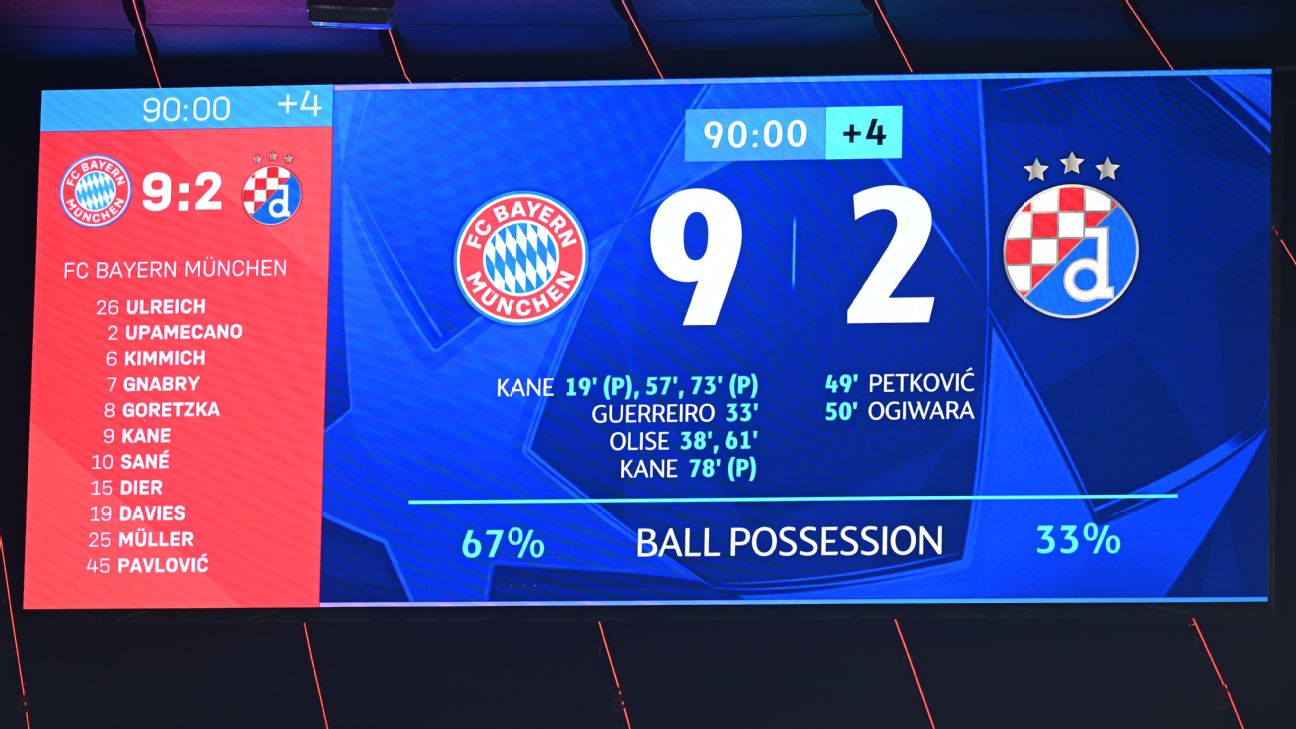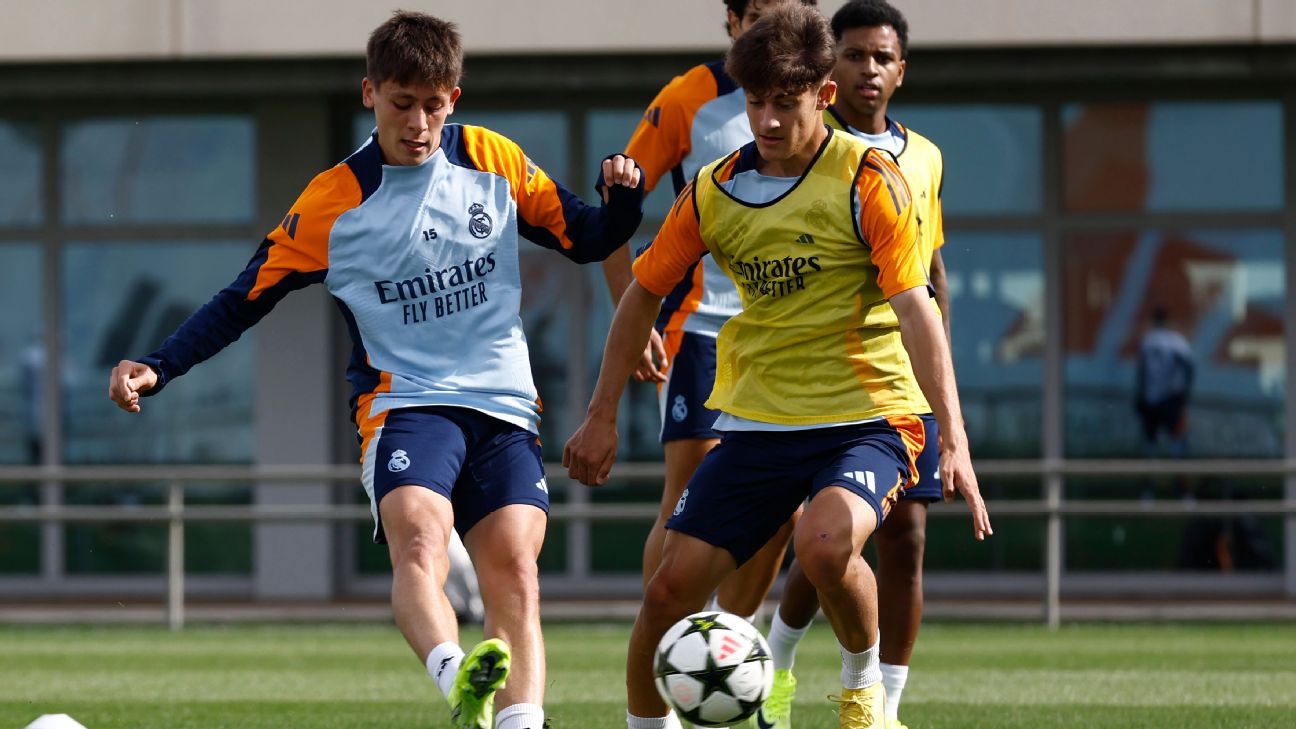We’re going to let you in on a little industry secret: it is quite difficult to preview a soccer league’s season when all of the teams in that league still have another month to both acquire more players and get rid of the ones they no longer want.
For example, seven players either joined or departed from Premier League clubs for transfer fees of at least €50 million since we wrote our preview at the beginning of last month:
-
Moisés Caicedo, from Brighton to Chelsea for €116 million
-
Harry Kane, from Tottenham to Bayern Munich for €100 million
-
Romeo Lavia, from Southampton to Chelsea for €62.1 million
-
Matheus Nunes, from Wolverhampton to Manchester City for €62 million
-
Jérémy Doku, from Stade Rennais to Manchester City for €60 million
-
Brennan Johnson, from Nottingham Forest to Tottenham for €55 million
-
Aleksandar Mitrovic, from Fulham to Al Hilal for €52.6 million
So, with plenty of player movement and four match weeks since we last evaluated each of the 20 teams in the Premier League, we figured we’d rank them all again. To be clear: these are power rankings, not a prediction for how we think the table will shake out. In other words, if one team is ranked above another team, it means we think it should be favored over the other team if they met on a neutral field. These are our forward-looking estimates for how all 20 teams will perform from here on out.
Like last time, we each ranked everyone from 1 to 20, and then added up our ratings to produce one master list. The updated rankings are featured below, followed by our analysis of the biggest risers and fallers since the season began:
The updated rankings
August and September’s rankings, the combination of Bill and Ryan’s individual rankings, are listed along with adjustments and present points totals.
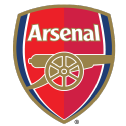
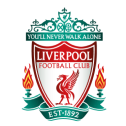 Arsenal and Liverpool: trading places
Arsenal and Liverpool: trading places
When we did this a month ago, we both had Arsenal ranked second and Liverpool ranked third. Four games into the season, they both have three wins and one draw, and yet we both decided to flip-flop the two teams. What gives?
Let’s start with Arsenal.
In bringing in Declan Rice, Kai Havertz and Jurriën Timber for a combined €234.9 million over the summer, they projected an incredibly high degree of confidence in their ability to identify talent. At €116.6m, Rice couldn’t really be anything worse than one of the best defensive midfielders in the world. At €75m, Havertz needed to become a Champions League-caliber midfielder. And at €40m, Timber had to jump right in from the Eredivisie and be an immediate contributor for a team with designs on being one of the best in the world.
Given that Arsenal relied on a core of 11 key players and started to falter when the lineup stretched beyond them last season, the success of all three new arrivals was vital to a potential title challenge and deep Champions League run. By betting big on three specific players to improve a thin squad, Arsenal didn’t give themselves much room for error.
Only so far, there’s been quite a bit of error.
Timber tore his ACL in the season opener against Nottingham Forest and will miss the rest of the season. Havertz, meanwhile, has seemed totally out of place in the new midfield role.
Much of Arsenal’s perceived upside was wrapped up in the possibility that a world-class player might be unleashed by pushing Havertz further back down the field. Through four matches, Havertz, well, looks like a forward who’s being asked to play in the midfield. He simply hasn’t shown the kind of tight-space dynamism or quick thinking we typically associate with the best players in these roles.
It’s way too early to write this move off as a failure, but through four games, it seems more likely to me that Havertz ends up as a depth piece across the front three rather than a starting-caliber midfielder for the Gunners. The former is still quite useful, but not as impactful as the latter.
It’s not all bad: Rice has looked great and already seems like he’s going to be a core piece for this team for the next half-decade. Despite that, Arsenal won’t have Timber for the rest of the season, while Havertz has yet to look like an immediate upgrade on Granit Xhaka. Plus, manager Mikel Arteta has shown a somewhat concerning compulsion to tinker with his lineups and then brag about his tinkering: 43 formations! Thomas Partey at right-back just isn’t it.
While I think it’s likely Arteta goes on to have a very successful managerial career, I think there’s more uncertainty about that than anyone really acknowledges. We’ve never seen him build and maintain a team over multiple seasons before, and we’ve seen him oversee a grand total of one season of high-level performance.
And yet his team is undefeated, and I don’t think there’s a real notable difference between Arsenal and Liverpool. They’re just about neck-and-neck in the betting markets for second place. Still, that is a change from the beginning of the season, when there was a bit of a gap between the two sides, and Manchester United were also lumped up there to form a group of three after the bigger gap from Manchester City.
So, why the rise from Liverpool in both the markets and our estimation of manager Jurgen Klopp’s team? Well, when we wrote our analysis last month, the team had still signed only Alexis Mac Allister and Dominik Szoboszlai, and we hadn’t seen either one play in a Liverpool shirt.
Mac Allister has done a reputable impersonation of a defensive midfielder against two of Liverpool’s weaker opponents, while Szoboszlai already looks like a genuine star. He does a little bit of everything in possession, and per Soccerment, he leads the team with nine “gegenpressing” actions (essentially, defensive actions within six seconds of losing the ball in the attacking half), while no one else has registered more than five. Since then, Liverpool have also added an actual defensive midfielder in Stuttgart veteran Wataru Endo and a potential defensive midfielder in post-hype prospect Ryan Gravenberch from Bayern Munich.
On top of that, the midfield-with-no-real-defensive-midfielder has held up quite well in their two games against weaker opposition. If they can safely roll out three of Gravenberch, Curtis Jones, Mac Allister, Szoboszlai and Thiago against non-top-eight teams, they’re going to win a ton of points this season. Plus, there are also early signs of a potential breakout season from Darwin Núñez, who would’ve been one of the best players in the world last season had his goals and assists matched up with his expected goals and assists.
There’s really not much between these two teams — to the extent that I could even see myself swapping them again after they each play this weekend. But to simplify it down: through four matches, Arsenal’s ceiling looks a bit lower than it did, while Liverpool’s has already been raised. — O’Hanlon

 Brighton and Tottenham: moving up
Brighton and Tottenham: moving up
To finish sixth in the Premier League last season — ahead of just two of England’s seven richest clubs — Brighton had to make a slew of incredible personnel moves, acquiring a number of good players (and managers) and, when losing those men to bigger clubs, acquiring even better performers in their absence. When you’re punching above your weight, it takes only a couple of iffy moves for everything to fall apart.
We’re still waiting on those iffy moves. We ranked Brighton seventh to start the season, and damned if they haven’t moved up three spots after resounding wins over Newcastle (3-1), Wolves (4-1) and Luton Town (4-1). They’re already five points ahead of Chelsea, to whom they lost manager Graham Potter and transferred the rights to midfielder Moisés Caicedo, left-back Marc Cucurella and goalkeeper Robert Sánchez for a combined €204.3 million over the past year and change.
Six other Seagulls have departed for at least €20 million since last summer, all to other rich EPL clubs, and Brighton is near all of them in the Premier League table.
At this point, manager Roberto de Zerbi is close to having the most fully realized pressing-and-possession team in the league. Brighton are fourth in possession rate (64%), third in average possession time (32.6 seconds), first in passes allowed per defensive action (8.7), fourth in passes per possession (7.3), first in fewest solo possessions (7.1%) and second in passes per opponents’ possession (4.0). They’re also first in goals scored, first in shots per possession and second in xG generated. That they’ve scored 12 goals from 9.1 xG hints at this being unsustainable, but 9.1 xG itself is excellent.
Of course, like a proper possession-and-pressing team, they can occasionally get torn up on counterattacks. Their lone blemish this year was a 3-1 defeat against a West Ham team that did exactly that. Brighton are a healthy sixth in shots allowed per possession, but they’re a Liverpool-esque 19th in xG allowed per shot. Between transition breakdowns and their first European slate — they begin Europa League play next Thursday with a visit from AEK Athens — it’s fair to think that a No. 4 ranking here might be a little bit optimistic. But this is a present-tense power ranking, and it’s hard to think of more than three teams better than Brighton at this moment.
With Tottenham, however, you can see any number of things. They finally said goodbye to Harry Kane in mid-August and made only one move with the €100 million fee they received from Bayern Munich for him — they brought aboard Nottingham Forest’s Brennan Johnson, a player with a nice sense of the moment but without many overriding contributions to the box score. Their attack is reliant on a number of players — Son Heung-min, Richarlison, Dejan Kulusevski, newcomer James Maddison — who have dealt with injuries in recent years, and known depth beyond them isn’t great.
Of course, before losing Kane, they’d already signed three players who have become immediate stalwarts — Maddison, defender Micky van de Ven and goalkeeper Guglielmo Vicario — and, in Kulusevski and fullback Pedro Porro, they made permanent the additions of a couple of 2022-23 loanees.
Spurs also brought in manager Ange Postecoglou, who has lived up to the idea that “if he’s been good at basically every job he’s had, he’ll probably be good at your job too.” Spurs have been a bit lucky in defense — they’re third in goals allowed (1.0 per match) but eighth in xG allowed (1.6) and shots allowed per possession — but the early results have still been bright and optimistic. They started out by playing two top-half-of-the-table teams (Brentford and Manchester United) and outscored them 4-2. Then they played two bottom-half teams (Bournemouth and Burnley) and beat them 7-2.
Postecoglou is building an actual, proactive identity at Tottenham, and it looks great so far. Maddison has two goals and two assists, Son has three goals, while young, recent addition Manor Solomon, who along with Johnson will be key to depth up front, teed up a pair of transition assists to Son in his first 70 minutes.
Spurs lost Kane and moved up three spots a month later; such is the power of AngeBall. We’ll see what kind of staying power they have if or when injuries kick in — having no European competition to worry about might help — but in terms of both style and results, it’s hard to ask for a better start than this. –Connelly
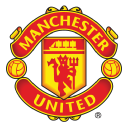

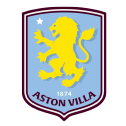 Manchester United, Newcastle and Aston Villa: moving down
Manchester United, Newcastle and Aston Villa: moving down
Manchester United, Newcastle United and Aston Villa all landed spots in the top half of our Premier League predictions. All have moved down at least two spots in the past month, though they’ve managed to disappoint in different ways.
At first glance, with decent overall continuity from last season, Man United appeared to be a potential fast-start candidate. They finished third in 2022-23 despite glaring issues at goalkeeper and center-forward, and they addressed both of those issues with big-money transfer purchases — veteran André Onana in goal, high-upside (and mostly unproven) Rasmus Hojlund up front. They also added Mason Mount, even though creativity in the attacking midfield wasn’t really an issue last season and has been Bruno Fernandes’ domain for a while.
Mount is injured, and Man United have been a bit unfortunate in attack — they’ve turned 2.0 xG per match into just 1.3 actual goals — but they also haven’t really been good at anything yet. They’re seventh in shots per possession and 14th in shots allowed per possession. They’re seventh in xG per shot and 13th in xG allowed per shot. They’ve played two good teams away (Spurs and Arsenal) and lost to each by two goals, and they’ve played two lesser teams at home (Wolves and Forest), needing late goals to salvage wins.
Further minutes for Hojlund (23 minutes and one shot thus far) would allow Man United manager Erik ten Hag to play Marcus Rashford in his more natural and productive left-winger role, and the club added some pre-transfer deadline muscle in defensive midfielder Sofyan Amrabat. We haven’t seen the finished Man United product yet, but the quick-start candidates have most assuredly not started quickly.
Newcastle haven’t fallen as far as the other two here, and a lot of their poor start can be explained away by their playing the toughest early schedule to date. They stomped Villa 5-1 to begin the season but lost to Liverpool (2-1) and Manchester City (1-0) and to Brighton (3-1) on the road. They get Brentford on Sunday, too, which isn’t exactly cake.
Thus far, this is still more or less the same old team that finished last season. Newcastle added fun and expensive young players like midfielder Sandro Tonali and wingers Harvey Barnes and Tino Livramento, but they’ve combined for only 379 minutes thus far, mostly from Tonali.
We’ll see how the new guys get broken in once Champions League play begins — they will visit AC Milan on Tuesday for their first Champions League match (not including qualifiers) in more than 20 years — but right now, eight guys have played over 285 league minutes, and five (goalkeeper Nick Pope, full-backs Kieran Trippier and Dan Burn, center-back Fabian Schär and winger Miguel Almirón) are at least 29 years old. Newcastle manager Eddie Howe leaned on veterans for the early run of tough matches, and it didn’t really pay off. They begin September with Champions League play and a hole out of which to dig.
All things considered, Aston Villa isn’t in too much of a hole. They officially qualified for the Conference League with a cumulative 8-0 pummeling of Hibernian in late August — they’ll play at Legia Warsaw next Thursday — and they scored a couple of easy league wins to get them to six points. Not awful.
But after enjoying solid injury luck last season, Villa were struck immediately this season, losing Tyrone Mings and Emiliano Buendía to ACL tears within five days of each other. The depth they spent the summer trying to bolster, with additions like winger Moussa Diaby, attacking midfielder Nicolò Zaniolo, midfielder Youri Tielemans and center-backs Pau Torres and Clément Lenglet, immediately took a hit.
Thus far, manager Unai Emery’s charges at Villa have played like a pretty definitive mid-table team, beating relegation candidates Everton and Burnley by a combined 7-1, but losing to top-four candidates Newcastle and Liverpool by a combined 8-1. Diaby already has two goals and an assist, holdover attackers Leon Bailey and Ollie Watkins have combined for a goal and three assists, and full-backs Matty Cash and Lucas Digne have contributed nicely in attack.
Things could be worse, but things could also be much better. Sounds like a 10th-place team, huh? — Connelly
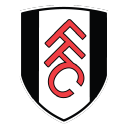
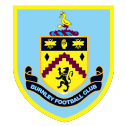 Fulham and Burnley: in trouble?
Fulham and Burnley: in trouble?
A couple seasons ago, I was talking to Fulham’s director of football operations, Tony Khan, during the team’s yo-yo years. They’d dominate the Championship, get promoted, get dominated in the Premier League, get relegated — rinse and repeat. He admitted to me that he’d underestimated the difficulty in transitioning from the Championship to the Premier League. It wasn’t that he didn’t realize how much better the Premier League was, but rather that he didn’t quite realize how differently the team would have to play once it made the jump to the top division.
Fulham were running the show in the second division with dominant, front-foot, possession soccer. This was possible because Fulham mostly had better players than everyone else in the Championship. But when you try to play this way in the Premier League, well, then you’re suddenly trying to play the same style as teams with much better players than you. And you’re also playing against other teams — also with better players than you — who have spent years crafting an identity designed to destroy teams that want to keep the ball.
After all, David didn’t take down Goliath by playing him straight-up.
This hasn’t quite been Fulham’s particular issue this season, their first back-to-back PL campaign since 2014. No, it’s been a simpler story: They didn’t replace their best player at the most important position on the field, and they’re regressing to the mean.
Last season, Fulham were the oldest team in the league — average age of 28.2, per the site FBref — but they finished 10th with a plus-2 goal differential. However, that came on the back of a minus-17.6 expected-goal differential — a discrepancy that was largely aided by good fortune across a number of situations, in addition to a career year from keeper Bernd Leno.
This season, they have managed to wring four points from four games, but they also have the third-worst GD in the league (minus-6) and by far the worst xGD (minus-7.8). A chunk of that is schedule-aided thanks to games against Arsenal and Manchester City, but Fulham were also awful against Brentford in a blowout loss and against Everton in a game that they, somehow, won:
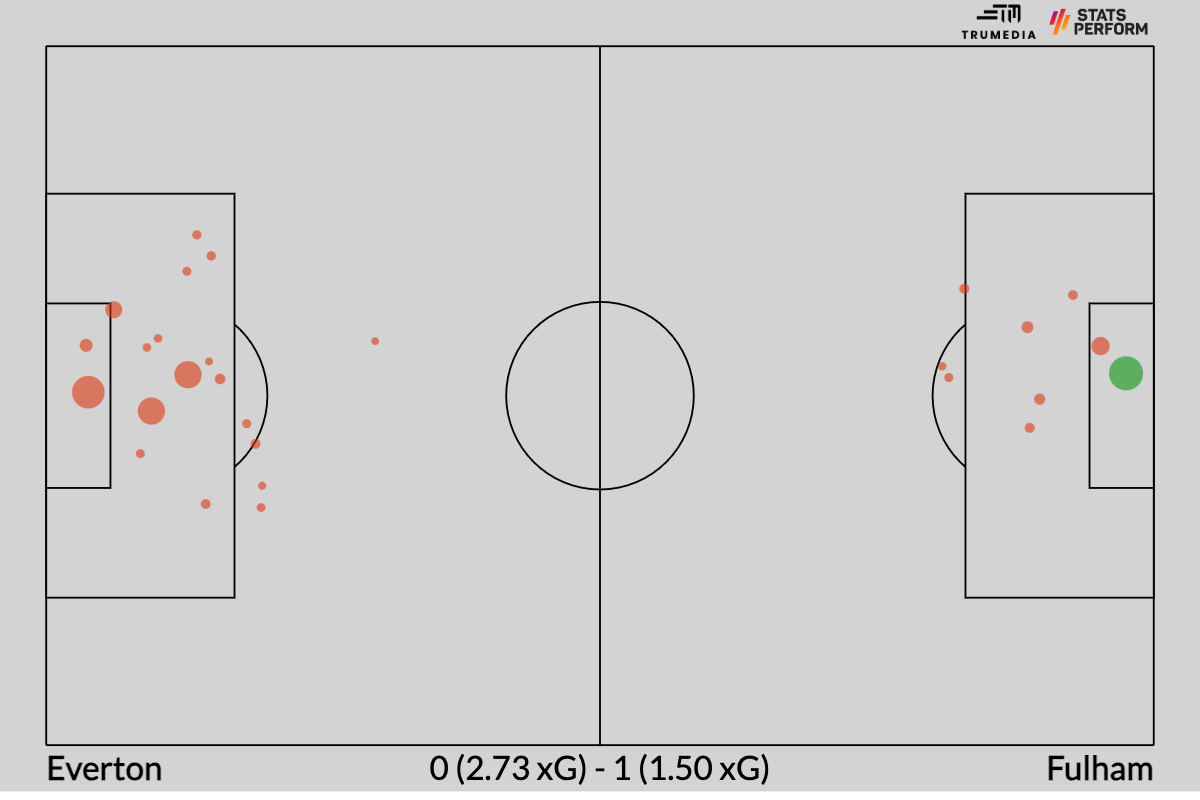
While there were warning signs already, Fulham’s underlying performance has been even worse so far this season than it was last year. And with an aging squad that wasn’t improved over the summer and was made worse by the departure of Aleksandar Mitrovic to the Saudi Pro League, there are mounting reasons to believe this decline is real.
However, the team experiencing the true Fulham-ing this year is actually Burnley. In the span of just a season, Vincent Kompany transferred the kick-the-ball-and-then-kick-you club into the dominant possession team of the Championship. They won the league by playing a kind of Manchester City Lite style, and both Bill and I thought this gave them a higher potential ceiling once in the Premier League if it all clicked.
Reader: clicketh, it hath not. Only Manchester City (0.65 meters per second) have moved the ball more slowly up the field than Burnley (0.8 m/s) have this season. (The league average is 1.25 m/s.) The big difference is that City have won every game and Burnley have lost every game. The Clarets are also trying to press high — they’ve won more possessions in the attacking third than any team in the league — but they’re also allowing the third-highest opponent completion percentage of any team in the league.
They look, mostly, like a team of unqualified players attempting to play like they’re one of the best teams in the world. There’s still time for it to work out, but all evidence so far suggests that it won’t be successful if it keeps looking like this. And if it doesn’t, what comes next? They’ve acquired players to try to play this way, and this is the only way they’ve played under Kompany.
The question that could come to define Burnley’s season: What do you do when, almost overnight, your biggest strength becomes your biggest weakness? — O’Hanlon

